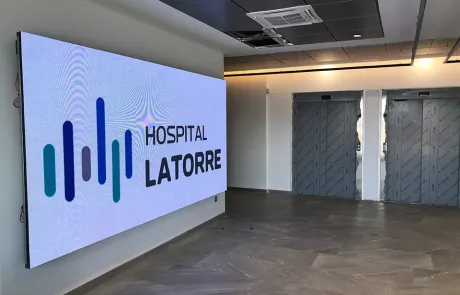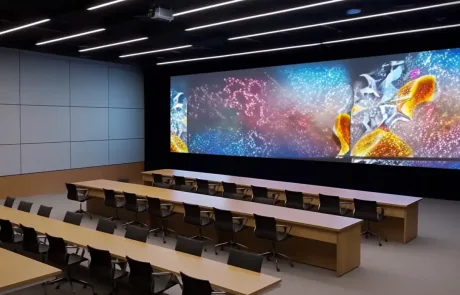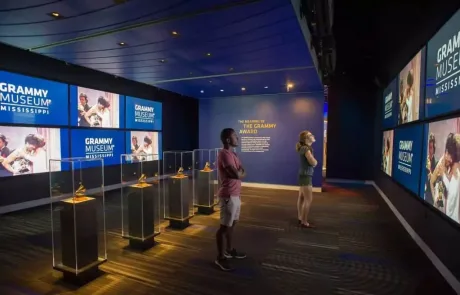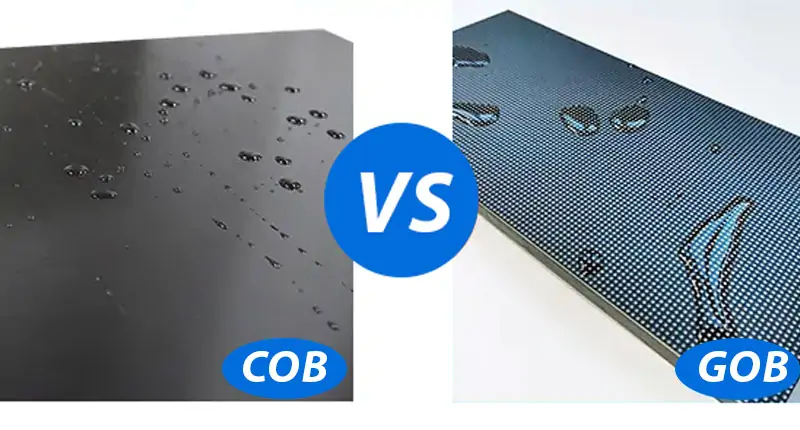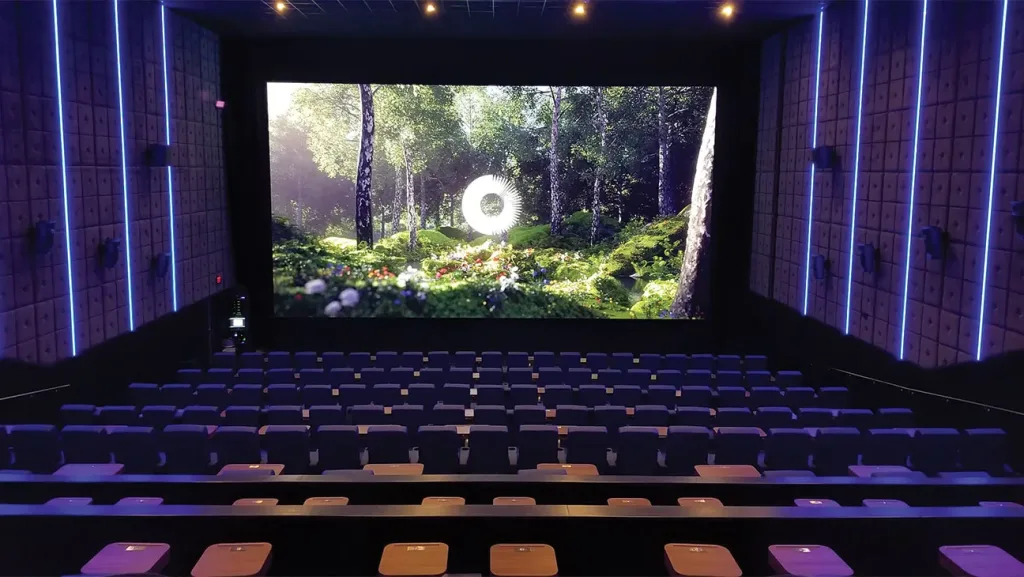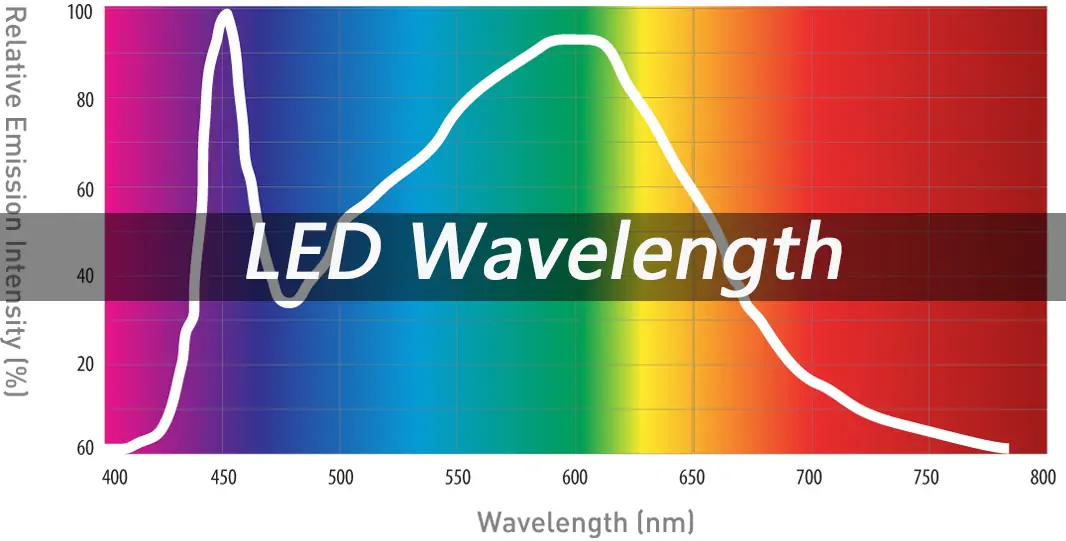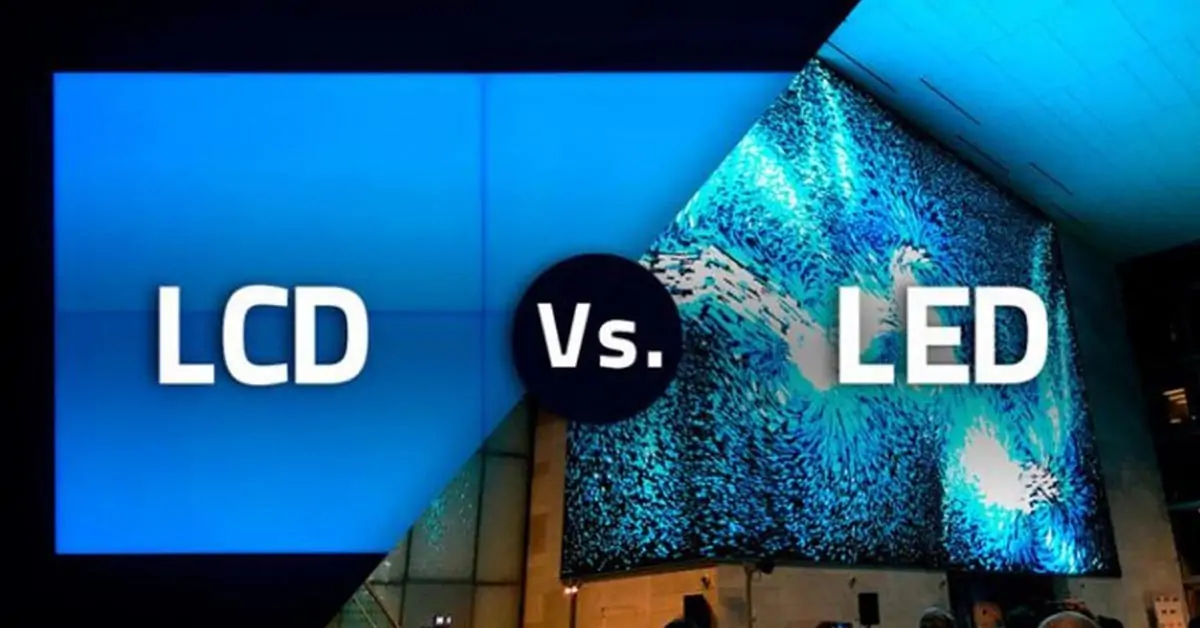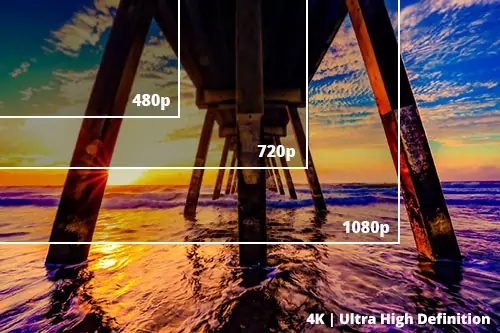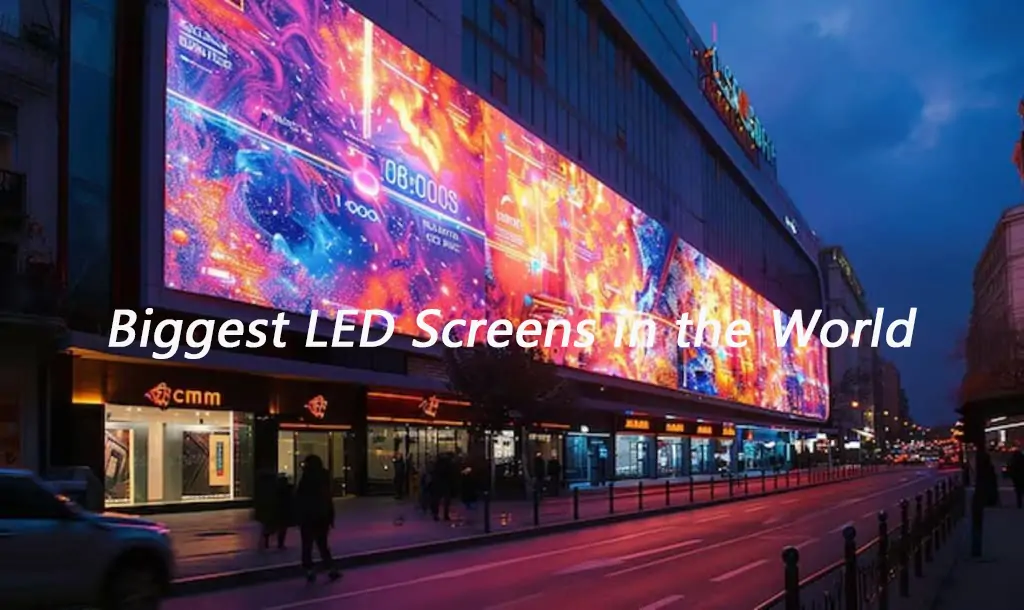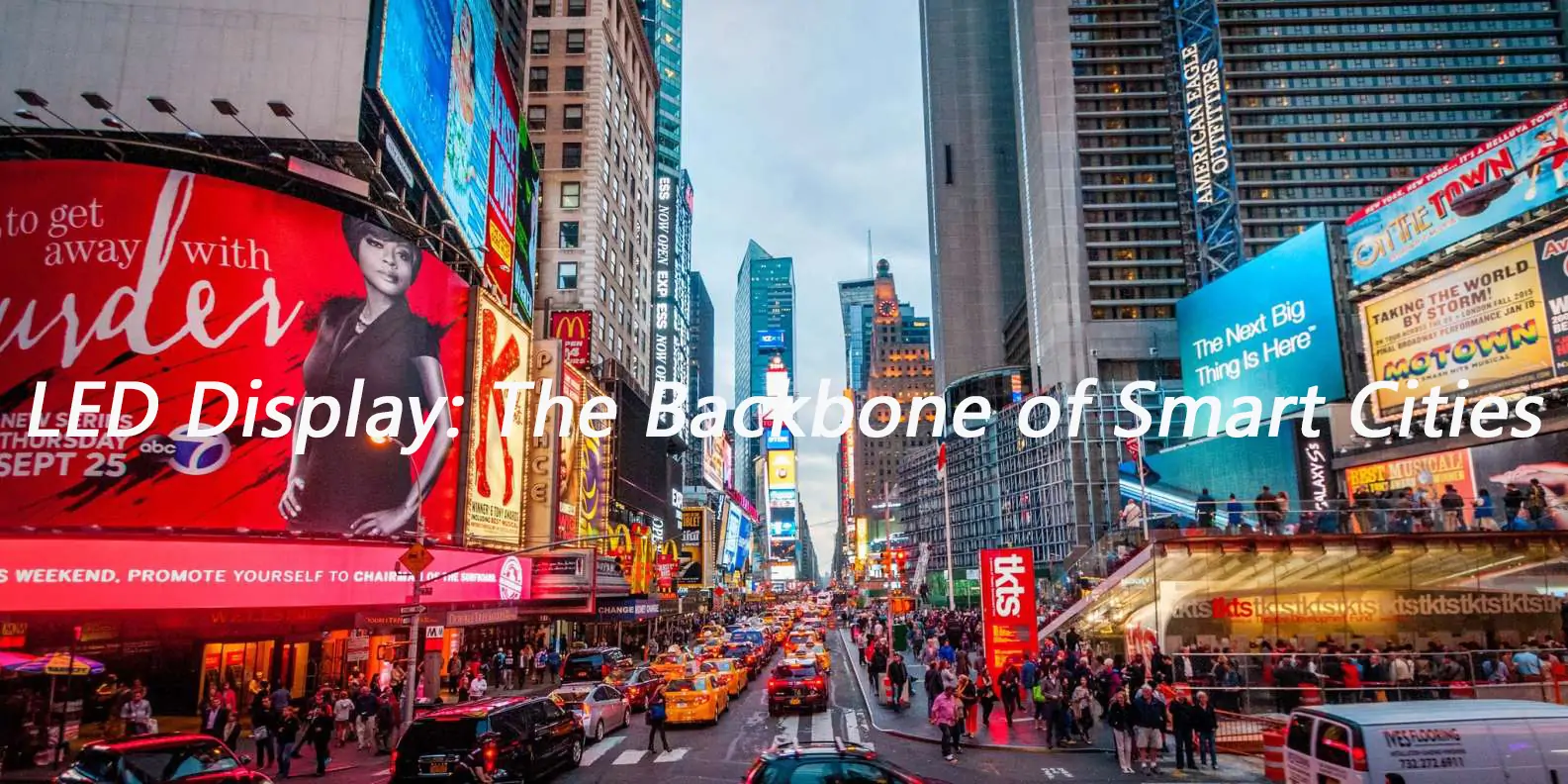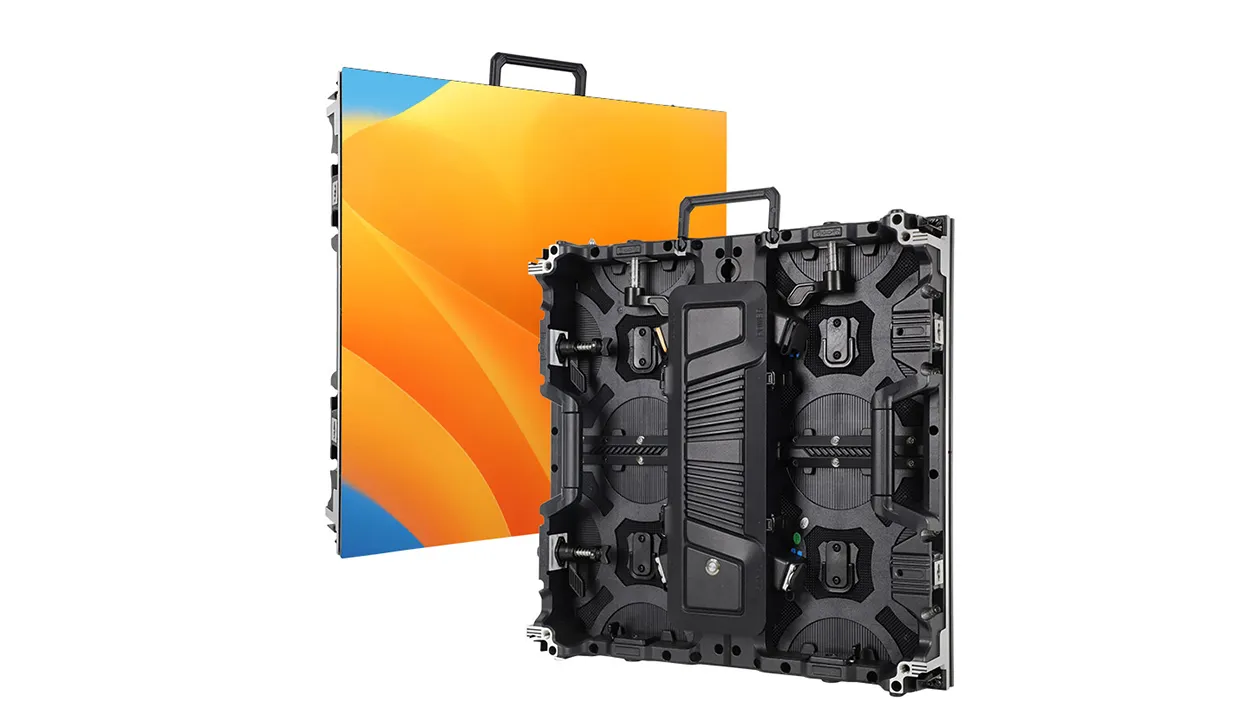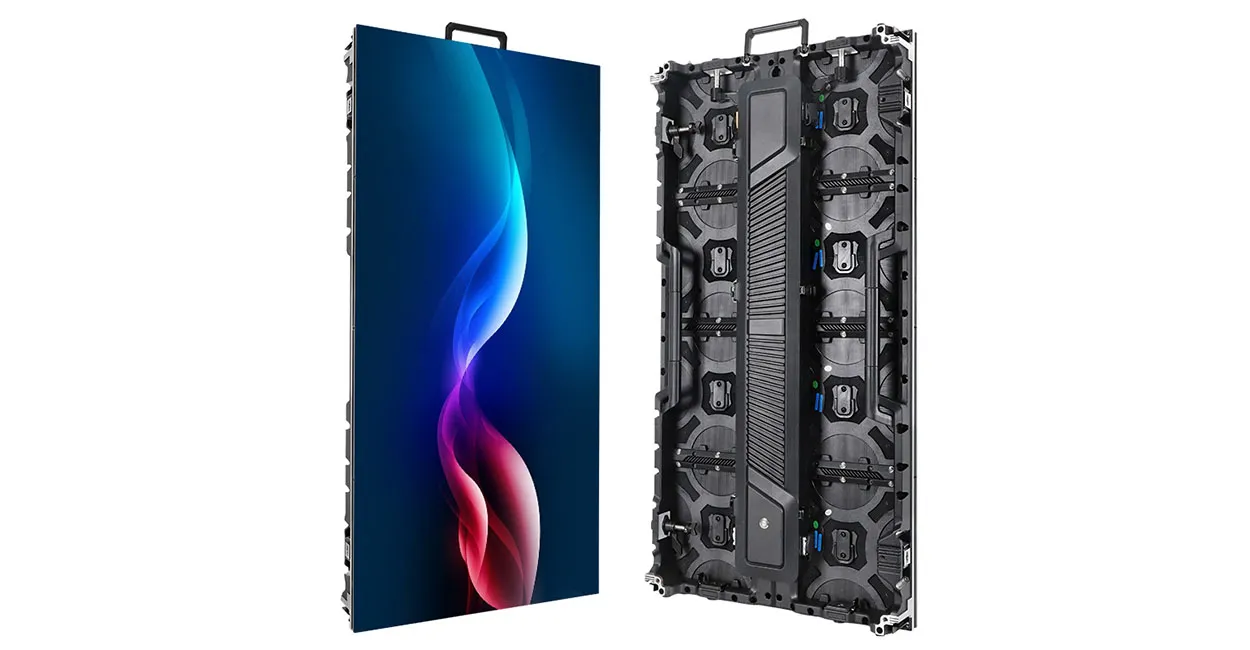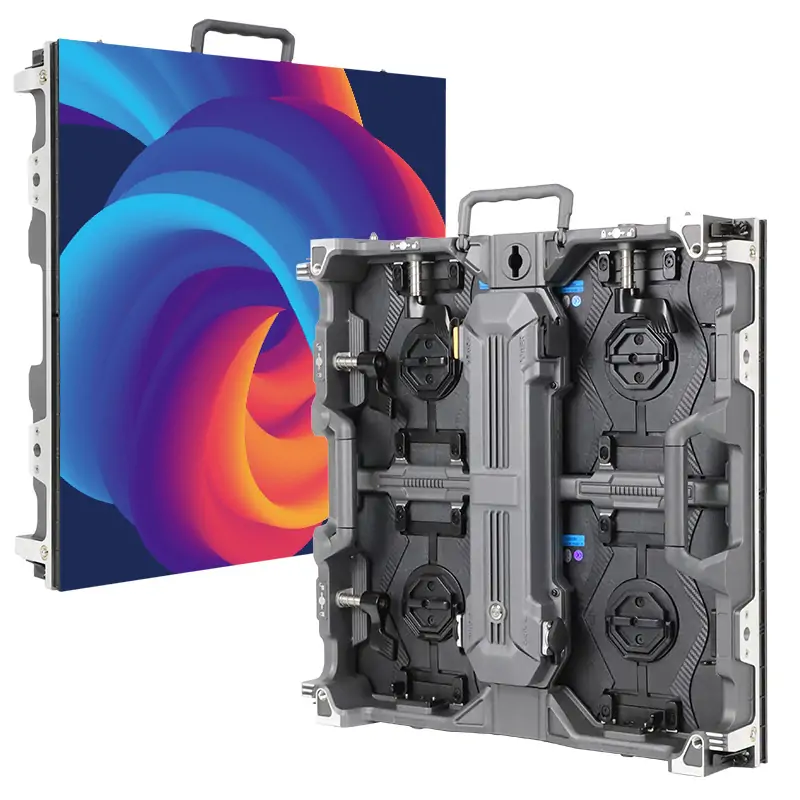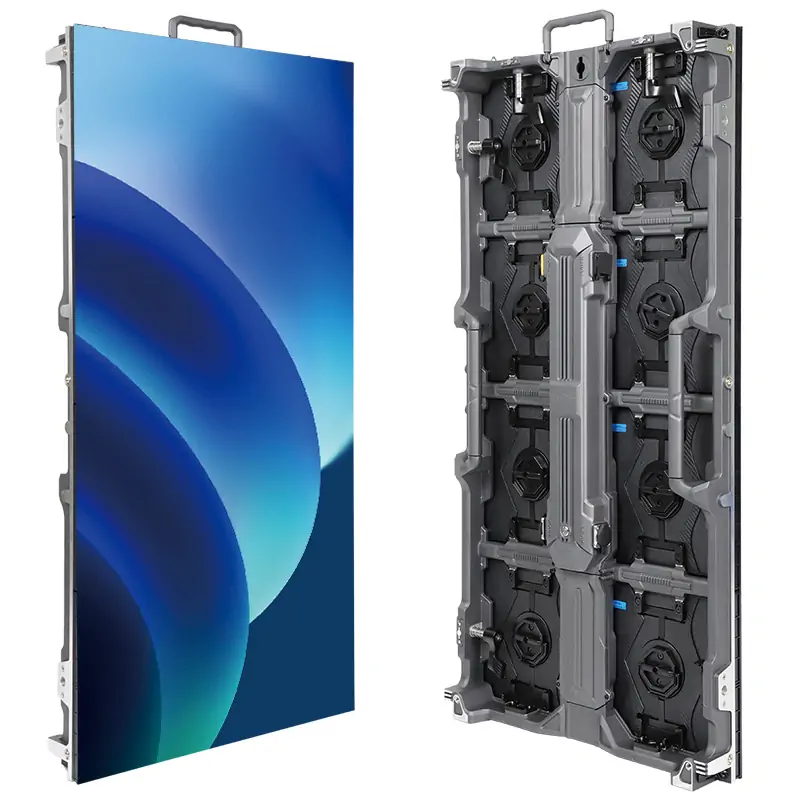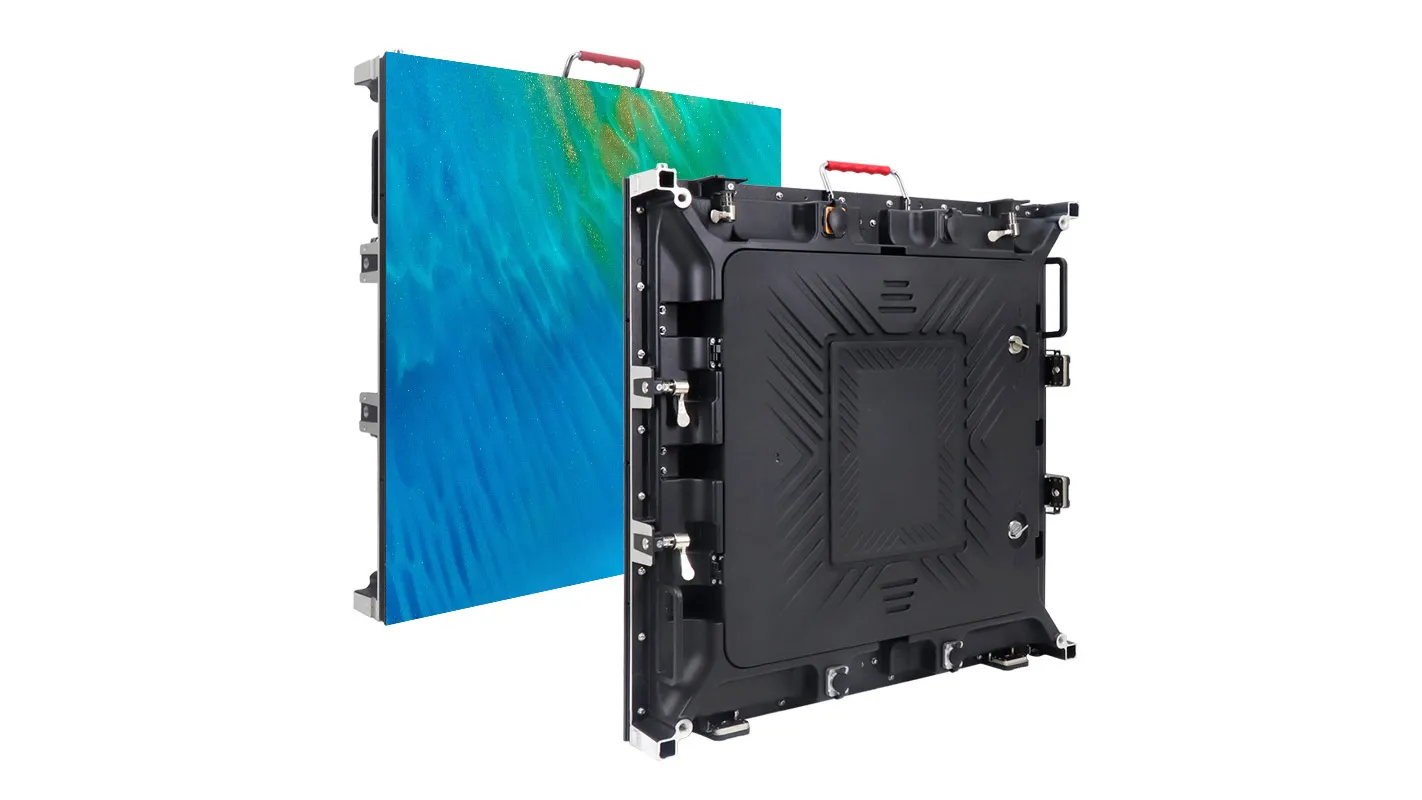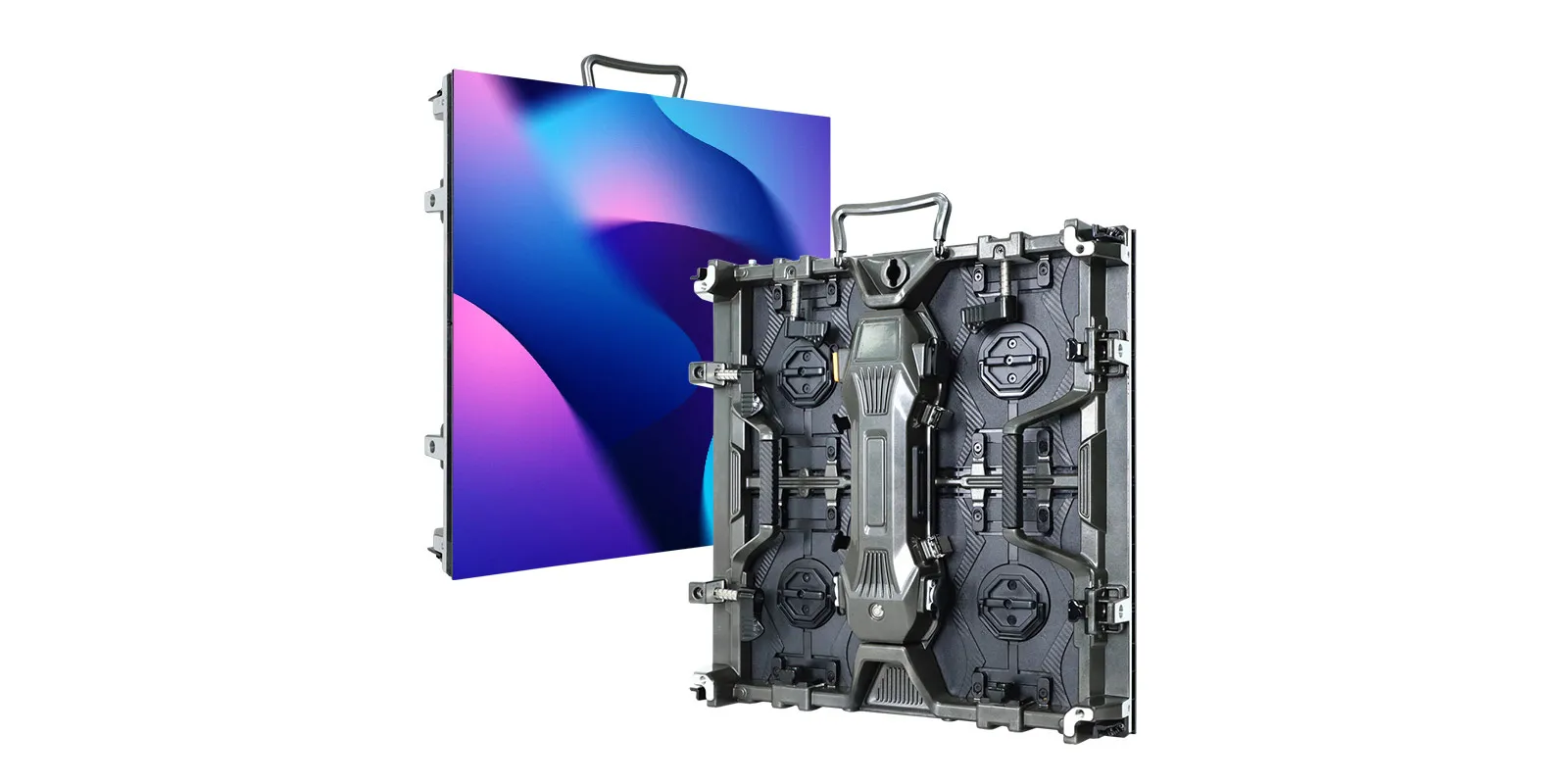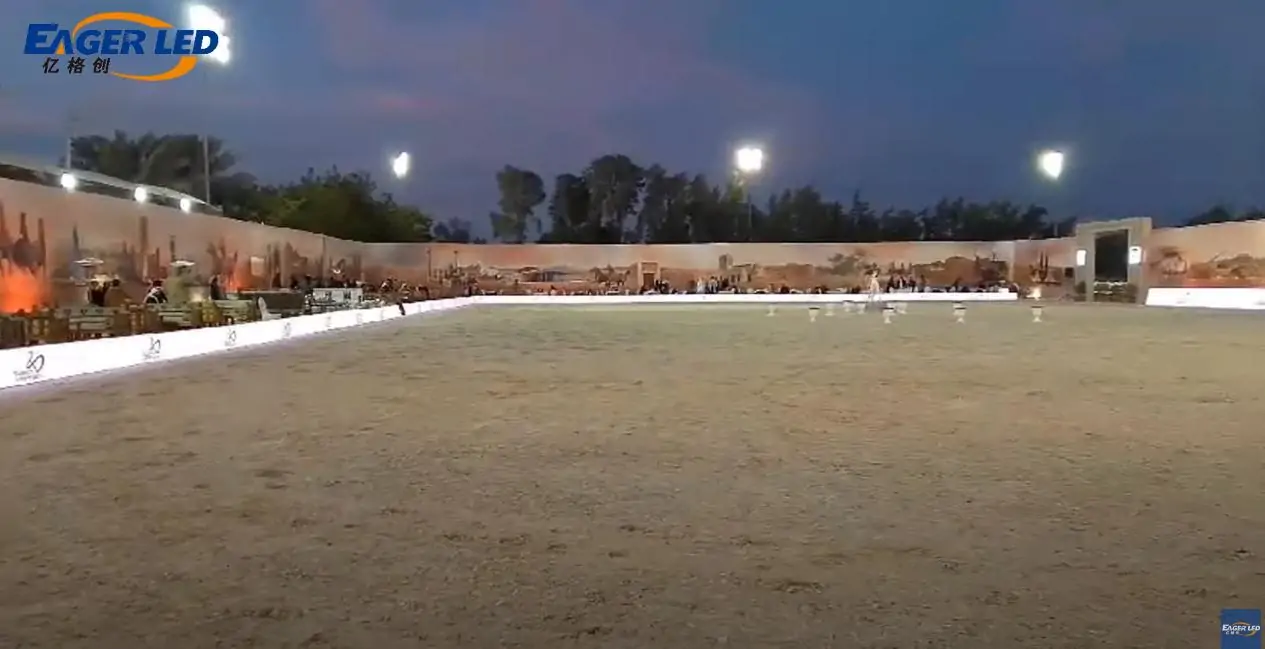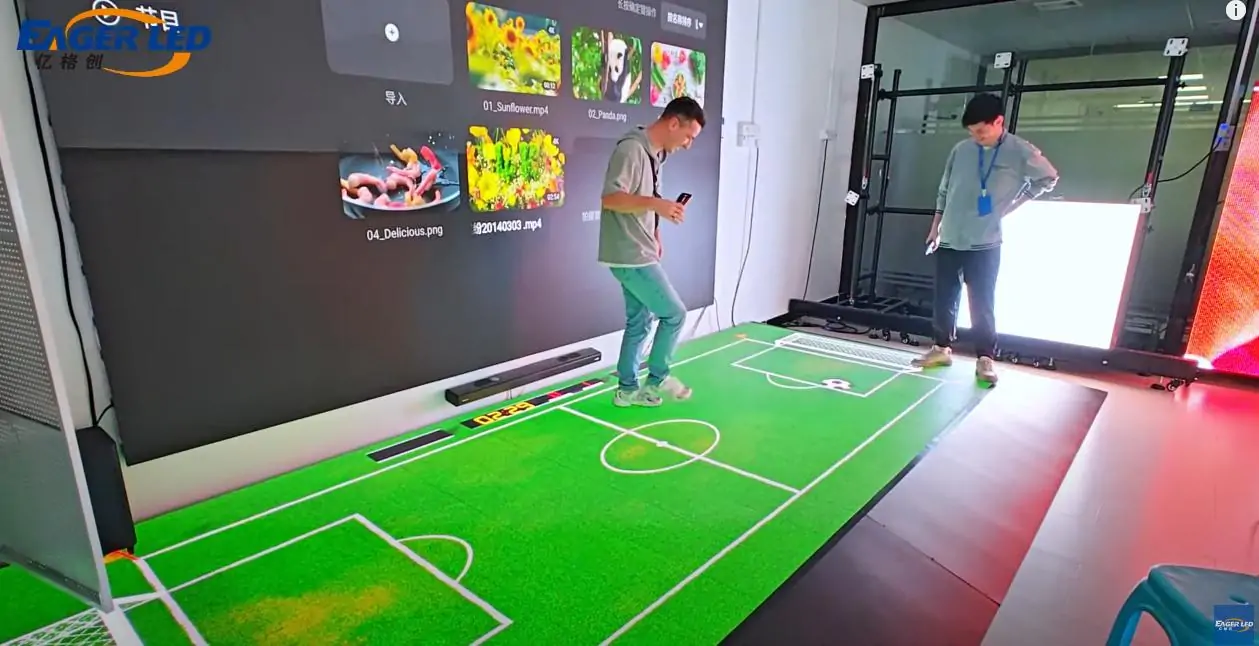LED display screens are bright and colorful. You see the LED display screen in shopping malls, sports stadiums, events and outside of buildings.
They are a rising feature of business communications because of their bright colors, high definition, and visibility for both indoor and outdoor use.
This article will describe their history, describe what they are, describe how they work and describe examples where LED displays are used and their significance in the future of business communications.
Let’s explore what gives LED display screens their power today.
- 1. Que é unha pantalla LED?
- 2. Historia e desenvolvemento das pantallas LED
- 3. Cales son algúns dos avances máis importantes na tecnoloxía de pantallas?
- 4. Cales son as principais vantaxes das pantallas LED para as empresas?
- 5. Onde se usan as pantallas LED?
- 6. En que se comparan as pantallas LED con outras tecnoloxías de visualización?
- 7. Tipos de pantallas LED a ter en conta
- 8. Que fai EagerLED Único no mercado de pantallas LED comerciais?
- 9. Cales son as súas perspectivas de mercado para unha pantalla LED?
- 10. Conclusión
1. What is an LED Display Screen?
An LED display screen is a flat panel made up of many small LEDs – or pixels, in a grid of pixels. Each pixel can manage a color, and collectively they create images or display video motion. The flat panel is referred to as an LED display screen panel, which is a type of digital signage and other applications to display advertisements, information boards etc.
One benefit of an LED display screen is that they are relatively energy-efficient. LEDs do convert electricity to light in a relatively clean way with little heat dissipated during operation.
The good example is the Fremont Street Experience in Las Vegas which is the largest outdoor LED in the world. Canopy covering the downtown street is about 1,375 feet on a majority of the tripled the image quality at daylight output levels.
A high quality LED display screen can withstand weather elements and in extreme temperate environments. Hence, we can use them in outdoor billboards, highway variable-message signs, and storefront digital ads.
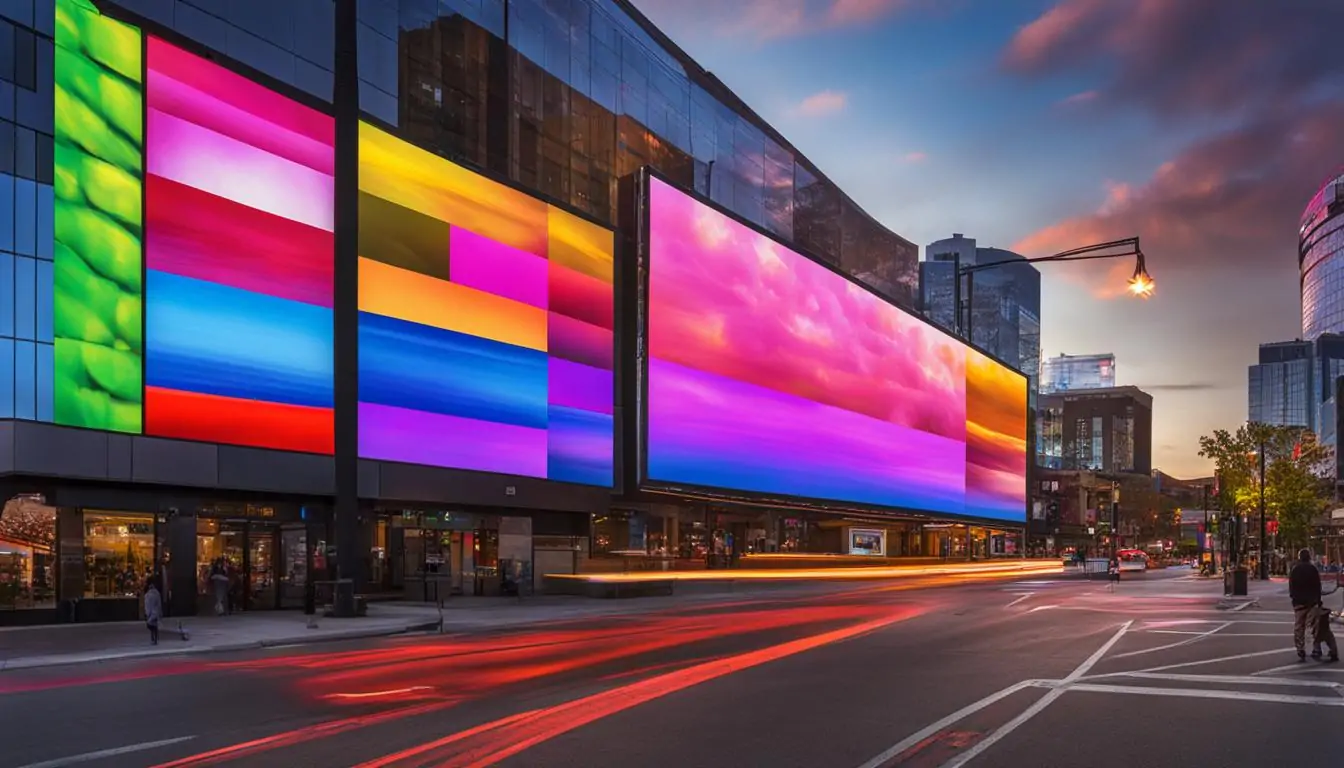
2. History and Development of LED Display Screens
LED technology first started in 1962 when Nick Holonyak Jr. produced the first visible LED while working at General Electric. At the time, LEDs only produced red light and were utilized primarily as indicator lights.
In 1968, Hewlett-Packard produced the first practical LED display -The HP 5082-7000 Numeric Indicator. By using this in conjunction with integrated circuits, we could now light a number on a calculator as opposed to using Nixie tubes or other fragile components that set the stage for LED signage.
By the late 1980s, red and amber LEDs had become good enough for public displays. The early 1990’s saw the invention of blue LEDs, notably by some researchers, including Shuji Nakamura. This led to the development of full colour displays and ultimately full-colour video walls and the extensive adoption of LED displays to mass advertising, sports arenas, and corporate staging.
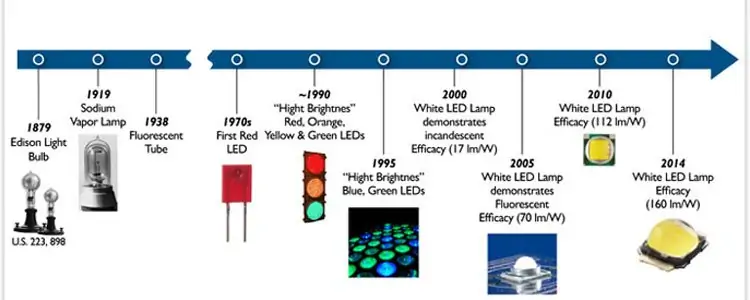
3. What Are Some of the More Important Advances in Screen Technology?
LED display technology has evolved rapidly in recent years allowing for thinner, clearer and more flexible screens. This evolution has improved image quality, but has also opened up available choices as to where (or how) LED screens can be used especially in a B2B relation with design for control rooms, exhibitions, and advertising.
3.1 Pixel Pitch and Clarity
One measurement that matters with regard to how good quality a display will be is pixel pitch. Pixel pitch is the distance (in millimeters) between the centres of two adjacent pixels. The smaller the pixel pitch the more pixels there are in a square meter and the higher the resolution and clarity for an image, which is key for indoor LED video panels viewed at close distance. As an example, a fine-pitch LED display (P1.2 or P0.9) would be considered in a conference room or TV studio.
3.2 MicroLED and Efficiency
The microLED is a new technology that utilizes microscopic LEDs for each pixel. MicroLED type displays deliver better blacks, sharper contrast, reduced power consumption, and have greater durability and longevity than the older types of LEDs – ideal for long-term commercial installations.
3.3 COB and Epoxy Resin Protection
Another advancement is Chip-On-Board (COB) packaging, where LED chips are placed directly on circuit boards – improved cooling and pixel pitch. When used with epoxy resin coatings, a COB LED is dust, moisture, and impact resistant – useful for any jobsite or semi-outdoor areas.
3.4 From Bulk to Flexible
LED display panels were bulky and needed considerable structural support for mounting. In recent years, building and engineering processes have improved, allowing for thinner screens. Transparent LED panels allow light to pass through and are therefore excellent when utilized in shop or storefront windows or glass walls while the flexible LED displays and roll-up panels offer creative opportunities in installations with curves or within mobile environments and are quickly becoming attractive architectural items.
4. What are the Key Advantages of LED Display Screens for Companies?
The advantages of LED display screens are significant, particularly in the business world. Whether indoors or out, they provide crisp visuals in a durable package that contains long-lasting value. The key advantages are:
4.1 High Brightness and Visibility
A key benefit of LED displays is their brightness. They remain visible and clear under direct sunlight, which is beneficial for outdoor advertising or shopfronts. Their bright colors allow the screens to be easily seen in loud and busy places, and their wide viewing angles attract attention and maximize visibility.
4.2 Energy Efficient and Cost Savings
LEDs require much lower power consumption than traditional lighting or display solutions. With less power consumption, costs can be greatly reduced over time, especially at a larger installation like video walls or building wraps. Many LED panels also operate cool, as compared to older display types that only run hot. This allows significant cooling systems to be decreased, if not eliminated altogether.
4.3 Durability and Longevity
There is significant durability built into LED display screens. They can survive harsh weather, extreme temperatures, and are even relatively resistant to physical impact if you begin working with different display types. Unlike traditional display types, LEDs can last a long time without short burns. With proper maintenance, an LED screen can survive over 100,000 hours, making them a reliable long-term investment.
4.4 Buildable and Modular
LED screens can be made from many smaller panels, allowing for designs that can be easily created in a number of shapes, sizes, and orientations. With modularity, a small indoor menu board can be built, or a massive outdoor billboard. Panels can be easily joined, removed, and reseamed for larger audits of change as your vision changes or to expand as your business grows.。Real-Time Content Control
With digital software, companies can make content changes in seconds, from promotions and announcements to videos and animations. This offers even greater flexibility and allows brands to keep current without printing or installing anything.
5. Where Are LED Display Screens Used?
LED display screen is now present in nearly every major industry. Their brightness, clearness, and ability to show moving content have made them a very useful tool to convey information or advertising.
Below are a few key instances where businesses use an LED display screen.
5.1 Retail Stores and Shopping Malls
Retailers can use LED signage to capture the attention of customers and passersby. Screens placed in store windows, at checkout counters, or throughout stores can show a product video, sales, or promotions. Unlike printed posters, LED displays can change any content in just seconds, allowing it to change content and keep it fresh and interesting.
5.2 Events and Live Entertainment
Concerts, conferences, sports matches, and trade shows will often utilize LED video walls as a backdrop or stage setup. These displays provide visuals, animations, and brand messaging to help the audience engage and connect with the event. The large footprint and intense brightness of the screens allows the audience to see it, even while in daylight or from considerable distance.
5.3 Broadcast and Studio Environments
In TV studios, LED display walls are used behind presenters to allow for dynamic visuals, news tickers, and real-time data. A good quality LED display screen from a reputable company provides better control of images and reduces the amount of post-editing that must be completed.
5.4 Transportation and Public Spaces
Airports, train stations, and dig bus terminals have also adopted LED displays for current travel updates, practical directional information, and advertisement. These types of displays can be viewed easier even in high visibility areas, such as outside in the natural sun or bright indoor spaces, and can also be updated quickly rather than setting up guides like signage on each occasion.
5.5 Hospitality Industry
Hotels and restaurants currently use an LED display screen for digital menus, welcome messages, or sharing event schedules. Digital LED displays convey modernity and can increase overall guest experience.
5.6 Education and Museums
Typically, universities and museums utilize an LED display screen in areas like lecture halls, exhibit spaces, and auditoriums for videos, images, and interactive content, which can be considered informational spaces that represent educational, and event experiences.
6. How Do LED Displays Compare to Other Display Technologies?
When selecting a display system for work or business, it is important to look at how LED technology compares to other common display options, such as LCDs, and projectors. They all have some pros and cons depending on their specific use, but LED systems had the advantage in many regards that would be most relevant in B2B environments.
6.1 LED vs. LCD Displays Brightness
A major advantage of an LED display screen is its inherent brightness compared to an LCD. This factor is important in visibility circumstances such as indoor and outdoor settings, which is imperative for outdoor advertising, trade shows, and large venues.
LED video walls by design and construction do not have bezels (borders) on the individual panels or edge-to-edge seams in images, which provide a seamless viewing experience across multiple panels.
The physical construction process of LED means a longer usable life span as a mainly more weather-resistant system away from LCDs, which makes them a long-term cost-effective decision for high-traffic or outdoor spaces.
The LED display screen provides wider viewing angles without color distortion, while LCD viewing requires direct viewing angles from behind due to brightness loss, and chances of color distortion from angles.
6.2 LED vs. Projection Systems Image Quality
The LED display screen exhibits improved image resolution, higher memory, sharper images and high-intensity color vibrancy values. On the other hand, projectors often fade/match nearby bright lights and only work successfully when rooms remain dark.
Projector displays demand bulb changes, must be maintained and require recalibration after use. The LED display screen needs relatively low maintenance and longer lifetime components.
The LED display screen can be curved, transparent, or flexible, while projectors do not provide this angular manipulation flexibility. They require an excessive degree of complex equipment and more dedicated space.
6.3 Transparent LED vs. Traditional Screens
The Transparent LED display screen can blend into their settings, and is also positionable on glass surfaces. It is due to the visually enhanced screen that allow front and ambient natural light into a room. So, all humidity effects are removed out of view.
These types of screens do display bright moving graphics and can be recognized in multiple presentations as nominal placed spaces.
Transparent LED display screen provides many applications. They are ideal for luxury retail spaces, car showrooms, corporate lobbies or within customizable work settings.
Summary Table: LED vs. LCD vs. Projection
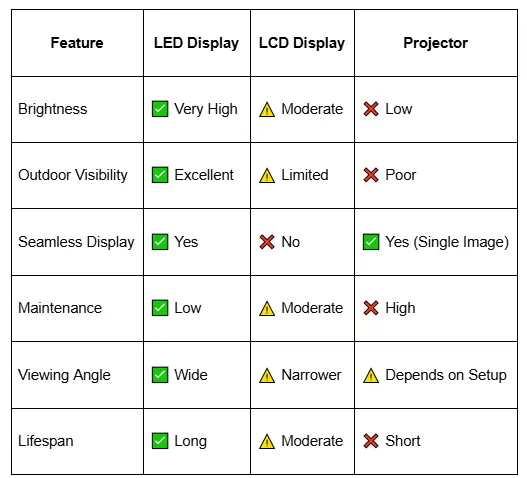
7. Types of an LED Display Screen to Consider
LED display screen technology comes in many forms. In fact, there are many different types of LED screens today. Each type serves various business needs, environments, and creative engagements.
The following are a few of the more common LED display screen solutions on the market:
7.1 Modular Video Walls
A modular video wall is composed of multiple LED panels that connect together to create a larger screen. As such, these walls can be extended to almost any size, making them perfect for arenas, control rooms, and exhibition booths. You will commonly see a modular video wall at trade shows, visual arts studios, and command centres overall. Modular video walls are highly flexible and simple to maintain.
7.2 Transparent LED panels
Transparent LED panels are similar to modular walls in that they create a screen, but they are made to comply specifically with glass. Transparent LED panels are built to let natural light through, while displaying digital images and design. They are popular in use cases for luxury retail stores, shopping mall displays, and high visibility car showrooms that care intensely about visibility and artistic appeal in relation to the display.
7.3 Flexible LED Displays
This Flexible LED display screen consists of thin displays which are simply flexible. Flexible displays allow displays to wrap around various surfaces, and fit well into many architecture forms. Flexible LED displays are often used as stage and or immersive backdrops, and as artistic and brand displays in museum or gallery displays that gain advantage through a creative layout.
7.4 Mobile Outdoor Advertisement (Trailer and Truck Mounted Mobile Screens)
Mobile LED displays are LED screens connected to a mobile apparatus, such as a truck or trailer. They are often used by businesses for temporary events, outdoor campaigns, or travelling advertisements. Mobile screens were used in outdoor festivals, political campaign marches, or during a pop-up advertisement event due to how quickly messages can be advertised while moving.
7.5 Indoor and Outdoor LED Panels
Indoor LED panels are purposely built for indoor environments, such as a lobby, or conference room. They usually center around resolution and design. Outdoor panels have water- and dust-resistancy, and offer higher levels of brightness for viewing externally in direct sunlight.
7.6 Curved or Cylindrical Screens
A Curved LED display screen can be used in creative spaces or immersive scenarios. They can provide wider angles of view, and can be found in spaces. For example, large auditoriums or architecture oriented design projects.
How Can you Choose the Right Type
When selecting an LED display screen type, you should consider factors like:
- Viewing distance (pixel pitch)
- Installation space and structure
- Weather exposure
- Portability and reusability
8. What Makes EagerLED Unique in the Commercial LED Display Marketplace?
When we assess manufacturers in the commercial LED display screen market, EagerLED differentiates itself from competitors.
8.1 Globally-Distributed and OEM/ODM Capabilities
EagerLED has a truly global enterprise operating in over 90 territories and has OEM and ODM capabilities for its products. This means that for integrators and resellers who want to take their projects worldwide, it will be easier to do so with products that are made by a company with global reach. Additionally, OEM and ODM services can allow resellers and integrators to customize hardware according to their brand and product performance specifications.
8.2 Adaptable to Varying Deployment Environments
EagerLED’s products are for indoor and outdoor use from rental displays to transparent panels. The product versatility supports deployments in retail, exhibitions, broadcast studios, transportation hubs, and control rooms.
8.3 Technical Flexibility
EagerLED provides LED display screen solutions for installation in curved configurations, fine pitch applications, and mobile LED applications. Their products are designed to provide the response to the increasing market demand for high definition and flexible screen formats without sacrificing stability and longevity.
8.4 Well Documented for Planning and Deployment Support
EagerLED provides own clear documentation, CAD drawings, and installer instructions to supplier support installers and systems integrators. As a B2B vendor, this is key in moving the technical planning processes and any on-site responsibilities efficiently, especially noticeable in impressions, LED display screen installations or tight timelines.
8.5 Forward Thinking to Innovate with Industry Trends
EagerLED actively aligns its product development programs with developing industry trends, many of which are established in the market at rapid pace. For example, trends such as microLED, high refresh rates for broadcast applications and developing lightweight cabinets which allow speed of installation.
9. What Is Your Market Outlook for an LED Display Screen?
The LED display screen market is receiving strong and continuing growth as more organizations are adopting digital signage for branding, advertising, and communication.
According to the latest reports, the globalised LED display market is predicted to reach almost $26 billion by 2030 as opposed to around $19.67 billion in 2025 with a steady CAGR of 5.7%, driven by demand in various sectors including retail, entertainment, corporate environments, and LED Display Screen transportation.
9.1 High Demand in Key Sectors
- Retail and Advertising: LED video walls and storefront displays increase product exposure and customer engagement.
- Trade Shows and Events: Portable rental LED panels are greatly desired for immersive booths and presentations.
- Broadcast and Virtual Production: XR stages and fine-pitch LED panels are replacing green screens in while utilizing film and media production.
Transportation Hubs: Airports and train stations utilize LED signage to provide clear and timely information.
9.2 Technology Trends to Watch
- Transparent LED displays are being used in high-end retail and glass architecture to create enveloping displays for customers and provide passive displays for customers to see-in and see-out.
- Fine-pitch and MicroLED displays are being deployed where visibility and resolution are most important, e.g. command centers, broadcast sets, etc.
- Rollable and curved displays are being adopted to introduce flexible design layouts that are becoming more prevalent in displays.
- Low-power, energy-efficient products are lowering overall power consumption without sacrificing display brightness and clarity.
9.3 Regional Insights
- Asia Pacific leads in LED display screen manufacturing and innovation. It is the largest market, with well-established manufacturing bases in China and growing demand across the Southeast Asia region.
- Europe’s event technology and smart city infrastructure is expanding.
- North America is investing heavily in virtual production and experiential retail.
10. Conclusion
The LED display screen has changed how businesses communicate, advertise, and interact with their audiences. From small indoor signs to giant outdoor video walls, the brightness, clarity, and flexibility of LED display screen provide many options across a range of industries.
Advances in LED display technology (fine pixel pitch, microLED, transparent) open up new creative possibilities for businesses. It is important for businesses to understand how LED displays work, and where they can be used, are key components to making informed decisions.
Are you ready for an upgrade in visual communication?
Check out EagerLED’s array of LED display solutions created for commercial impact. Outdoor video walls, flexible indoor panels, we support businesses in creating amazing, high-impact, visual displays that last.
Go to EagerLED’s website to learn more, or get a custom quote for your next project.
Related Posts
Fill In Your Needs In Detail
Fill in the screen usage scene and size you need in “Content”.You will get a quote.

